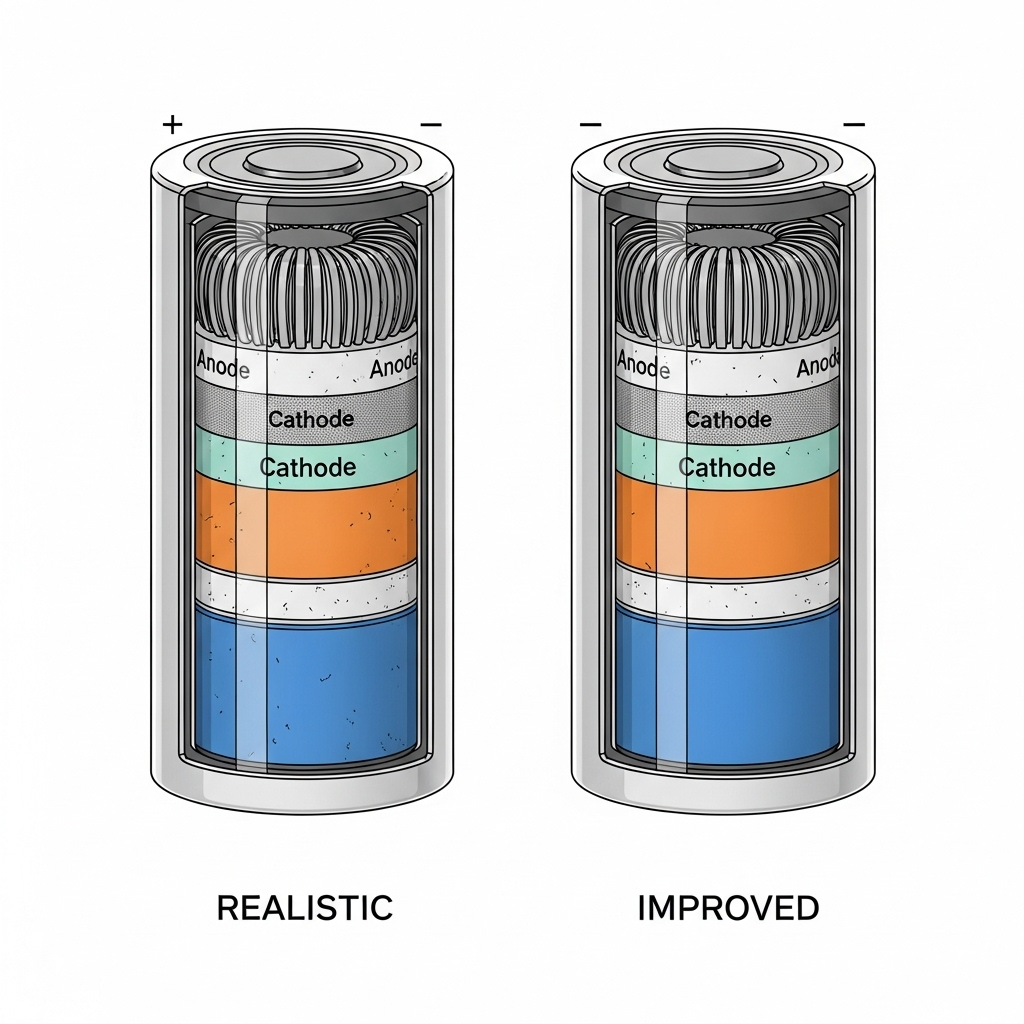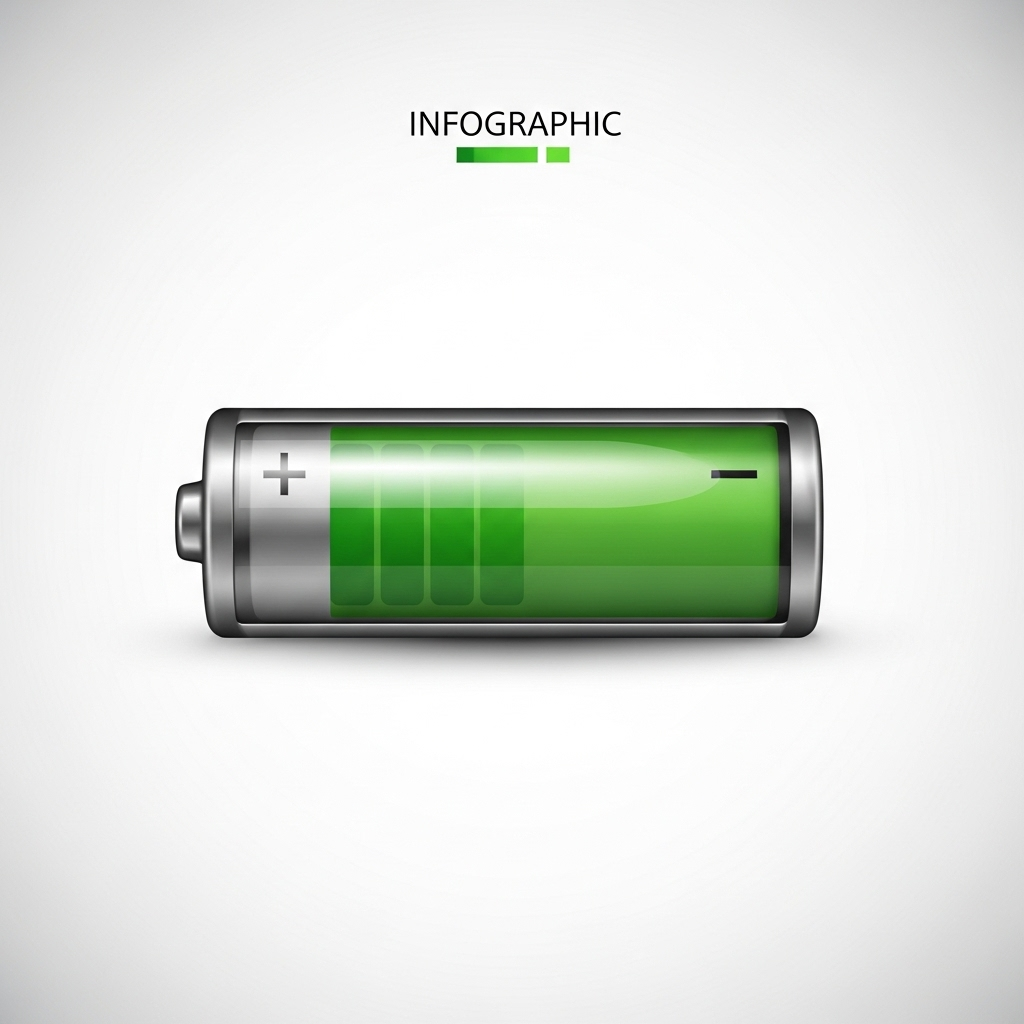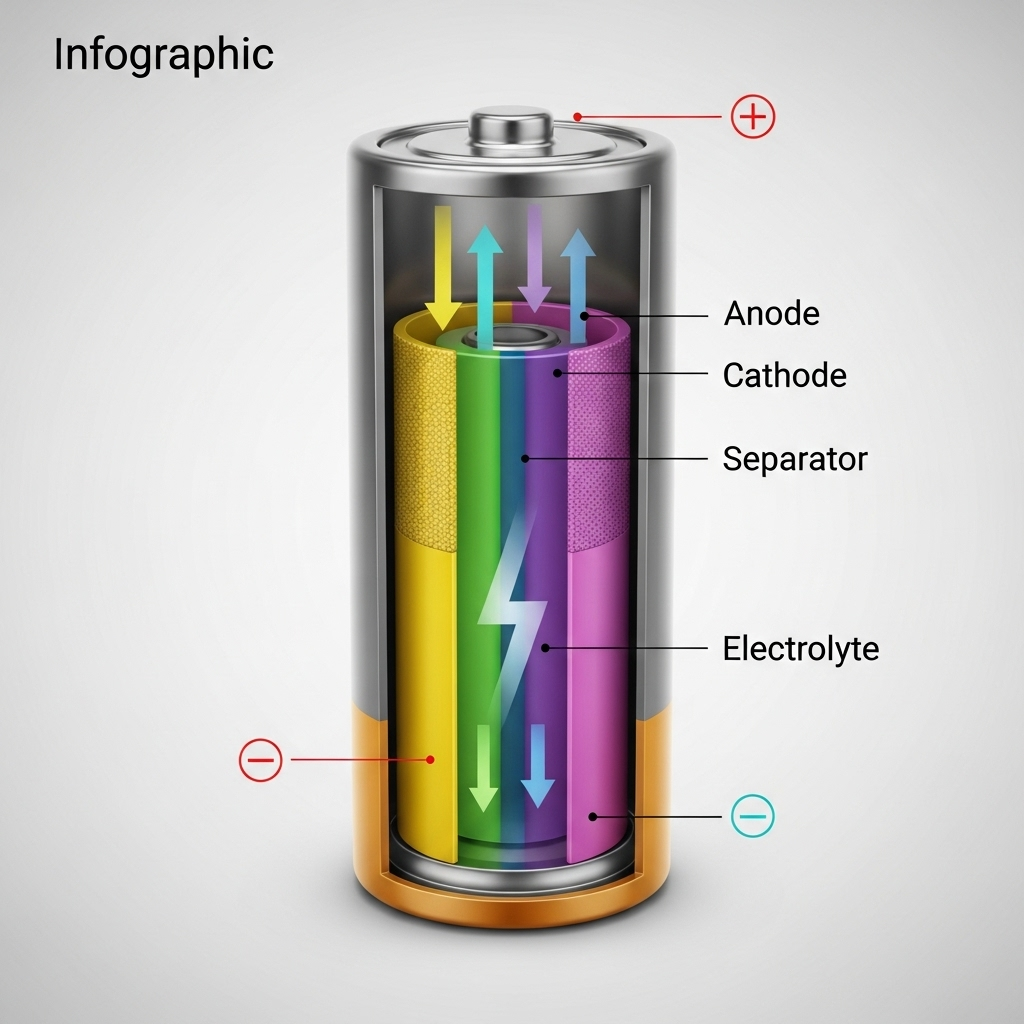Many energy storage system owners focus intently on cycle counts, viewing it as the primary measure of a battery's lifespan. While cycle life is important, another, more subtle aging process is constantly at work: calendar aging. This time-based degradation affects your battery every single day, regardless of use. The good news is that you can actively slow it down.
This article explains the critical concept of calendar life and shows how your daily charging habits, specifically avoiding deep discharges, can significantly extend the service years of your investment. By implementing smarter State of Charge (SOC) bands, you protect your battery from premature aging and improve its long-term value.
Understanding Battery Aging: Beyond Just Cycles
To truly maximize your battery's lifespan, it's important to recognize that degradation comes from two sources: wear from use (cycling) and wear from time (calendar aging). Managing both is the key to longevity.
What is Calendar Life?
Calendar life refers to the deterioration of a battery's capacity and performance over time, even when it is not being cycled. Think of it as the battery's natural aging process. The primary drivers of calendar aging are time, elevated temperatures, and a high state of charge. Chemical side reactions occur continuously inside the battery, slowly consuming the active materials. A battery stored at 100% SOC in a hot climate will experience much faster calendar aging than one stored at 50% SOC in a cool environment.
Cycle Life vs. Calendar Life: A Crucial Distinction
Cycle life measures how many times a battery can be charged and discharged before its capacity drops to a certain level (typically 80% of its original capacity). It is directly impacted by the Depth of Discharge (DoD)—deeper cycles cause more wear. Calendar life, on the other hand, is always ticking away in the background. For a daily-use solar battery, these two aging mechanisms are intertwined. Your daily operating strategy, or your chosen SOC window, influences both. By choosing a strategy that is gentle on the battery, you can mitigate both types of wear simultaneously.
How Daily Deep Cycling Accelerates Calendar Aging
The routine of pushing your battery to its limits every day does more than just use up cycles; it actively speeds up the time-based degradation that shortens its overall service life.
The Chemical Stress of Extreme SOC Levels
Both very high and very low states of charge place chemical and mechanical stress on the battery's internal components. At a high SOC, the cathode material is in a more oxidized and less stable state. At a very low SOC, the anode can experience stress. These conditions accelerate parasitic reactions that lead to the growth of the Solid Electrolyte Interphase (SEI) layer. While a stable SEI layer is essential for battery function, its continued, excessive growth consumes lithium and increases internal resistance, permanently reducing capacity. Daily deep cycling forces the battery to pass through and rest in these high-stress zones, compounding the rate of calendar aging.
The Myth of 'Exercising' Your Battery Daily
A persistent myth, often a holdover from older nickel-cadmium (NiCd) battery technology, suggests that batteries need a full discharge and recharge daily to maintain their health. For modern lithium chemistries like Lithium Iron Phosphate (LiFePO4), the opposite is true. These batteries have no 'memory effect' and perform best with shallow cycles. Consistently operating within a moderate SOC range is far healthier than forcing a deep 'exercise' cycle each day.
Defining Smart SOC Bands for Enhanced Calendar Life
A smart SOC band is a defined operating range that avoids the stressful extremes of being fully charged or fully depleted. Setting one is a simple and effective way to promote longevity.
The 'Sweet Spot': Finding Your Optimal SOC Window
For most LiFePO4-based home energy storage systems, the 'sweet spot' for daily operation lies between a 20-30% lower limit and an 80-90% upper limit. A more conservative window, such as 30% to 80%, can offer even greater benefits for calendar life. The main trade-off is a reduction in daily usable capacity. However, by properly sizing your battery bank to meet your needs within this smaller window, you gain a significant extension in service years. For a detailed breakdown of how different SOC windows impact overall battery performance and longevity, the ultimate reference on solar storage performance provides valuable data-backed insights.
Practical Steps to Set Your Daily SOC Window
You can typically configure your SOC limits directly in your solar inverter's control panel or through its associated software. The process involves:
- Assessing Your Daily Load: Calculate your average daily energy consumption.
- Sizing for the Window: Ensure your battery bank is large enough so that your daily needs consume only 50-70% of its total capacity.
- Setting the Lower Limit: Set the minimum SOC to 20% or 30%. This preserves a power reserve and avoids the stress of deep discharge.
- Setting the Upper Limit: Set the maximum SOC to 80% or 90%. This prevents the battery from sitting at a full 100% charge for long periods, which is a key accelerator of calendar aging.
The Role of Occasional Full Charges
While avoiding a daily 100% charge is beneficial, an occasional full charge is necessary for battery health. Most Battery Management Systems (BMS) require a full charge cycle to perform cell balancing. This process ensures all individual cells within the battery pack are at an equal voltage, which is crucial for safety, accurate SOC reporting, and maximizing usable capacity. A full balancing charge once every few weeks is a common and effective practice.
The Long-Term Financial Impact
Adopting a smarter SOC strategy is not just a technical adjustment; it's a financial decision that enhances the return on your energy investment.
Translating Calendar Life into Return on Investment
A longer calendar life directly translates to more years of service, which lowers the Levelized Cost of Storage (LCOS)—the total cost of the battery divided by the total energy it delivers over its lifetime. A battery managed with a conservative SOC window can outlast its warranty by several years, providing 'free' energy storage and significantly improving your ROI.
| Operating Strategy | Daily SOC Window | Estimated Calendar Life | Relative Cost per kWh Stored |
|---|---|---|---|
| Aggressive Use | 10% - 100% | 8-10 years | Base |
| Balanced Use | 20% - 90% | 11-13 years | ~15% Lower |
| Conservative Use | 30% - 80% | 14-16+ years | ~30% Lower |
Disclaimer: These figures are estimates for illustrative purposes. Actual lifespan depends on chemistry, temperature, C-rate, and other factors.
Aligning with Global Energy Trends
Maximizing the lifespan of energy assets is becoming a global priority. As investment in renewables skyrockets, ensuring the durability of infrastructure is key to a sustainable transition. According to the World Energy Investment 2023 report by the IEA, policies like the US Inflation Reduction Act and ambitious new renewable targets in the EU are driving unprecedented growth in solar and storage deployment. Making these assets last longer is not just good for your wallet; it supports broader energy security and climate goals. Furthermore, as the Global Renewables Outlook: Energy transformation 2050 from IRENA highlights, recovery packages and stimulus should accelerate the shift to decarbonized economies, reinforcing the need for durable and long-lasting clean energy systems.
A Smarter Approach to Energy Storage
Thinking beyond cycle counts and focusing on calendar life is a paradigm shift in managing your energy storage system. By moving away from the harmful practice of daily deep cycling and embracing a moderate SOC band, you take direct control over your battery's aging process. This simple strategy protects your hardware, extends its service life, and ultimately delivers a greater return on your investment, paving the way for true and lasting energy independence.
Frequently Asked Questions About SOC Bands and Calendar Life
Is it bad to leave my LiFePO4 battery at 100% SOC?
While LiFePO4 is more tolerant of a high state of charge than other lithium chemistries, leaving it at 100% for extended periods, especially at high temperatures, accelerates calendar aging. It is best to charge to 100% only when you need the full capacity immediately or for periodic cell balancing.
What is a more important factor for longevity: calendar life or cycle life?
Both are critical. For a system used daily, like a solar home, calendar and cycle aging happen simultaneously. If you cycle the battery heavily every day, cycle life might be the limiting factor. If you use it lightly, it might reach its end-of-life due to calendar aging first. A smart SOC window strategy addresses both types of wear.
Will using a narrow SOC band void my battery's warranty?
Generally, no. Most warranties are based on years of service or total energy throughput (or cycles), whichever comes first. Using a narrower SOC band reduces wear and makes it more likely your battery will exceed its warranted life. Always check your specific manufacturer's warranty terms. This information does not constitute legal advice.
How often should I perform a full 100% charge for cell balancing?
A common recommendation is to perform a full charge cycle (up to 100% SOC) once every 4 to 6 weeks. This allows the Battery Management System (BMS) to balance the voltage across all the cells in the pack, ensuring safety, accurate readings, and optimal performance.





Leave a comment
All comments are moderated before being published.
This site is protected by hCaptcha and the hCaptcha Privacy Policy and Terms of Service apply.